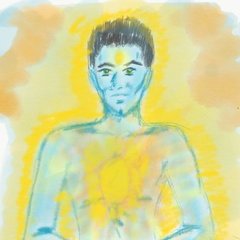-
Content count
8,420 -
Joined
-
Last visited
-
Days Won
77
Everything posted by dwai
-
Was in the park yesterday morning, doing dao gong and Tai chi with my friends. We’ve been practicing at this specific park for close to 10 years now, normally from late spring through fall, as winters in Chicago are brutal. As we were doing the meditation, I started to see what seemed like cobwebs of white light all over, all around us. It is interesting it was visible with both eyes open and closed. Very interesting phenomenon, thought I’d drop this pebble in the proverbial pond and see what happens
-

Damo Mitchell – Any Verifiable Demonstration of Skill or Qi Emission?
dwai replied to ChunMaya's topic in General Discussion
Having no "horse in this race", I would say, I find Damo's online persona a bit off-putting. I think he and his mate Adam do posture a bit to provoke reactions As far as abilities go, I would agree with @forestofclarity that he probably focuses more on "power" than wisdom. Personally, fwiw, I know a few teachers who are far more humble and capable than both of them, but they are young (relatively speaking), and therefore have opportunity to grow (especially in the wisdom department). I also like Mark Rasmus a lot more than either of those worthies, simply because he is matter of fact and direct, and comes across as being a lot more genuine. -
Ditto on the fog (I saw this on a regular basis during early days after getting initiated by my teacher), and the torroid (during practice, especially circulating the energy)
-
This is what it sort of looked like
-
Not in the snow
-
Combining Mudras with specific pranayama works very effectively. What I learnt in Tamil Siddhar Yoga practice was a sequence of chin mudra --> chinmaya mudra --> aadi mudra --> merudanda mudra in combination with specific pranayama - very effectively raises the kundalini in the sushumna while also balancing the ida-pingala nadis. Very powerful stuff, but requires patience and preparation of the spinal column (both physical and energetic) for it to work.




